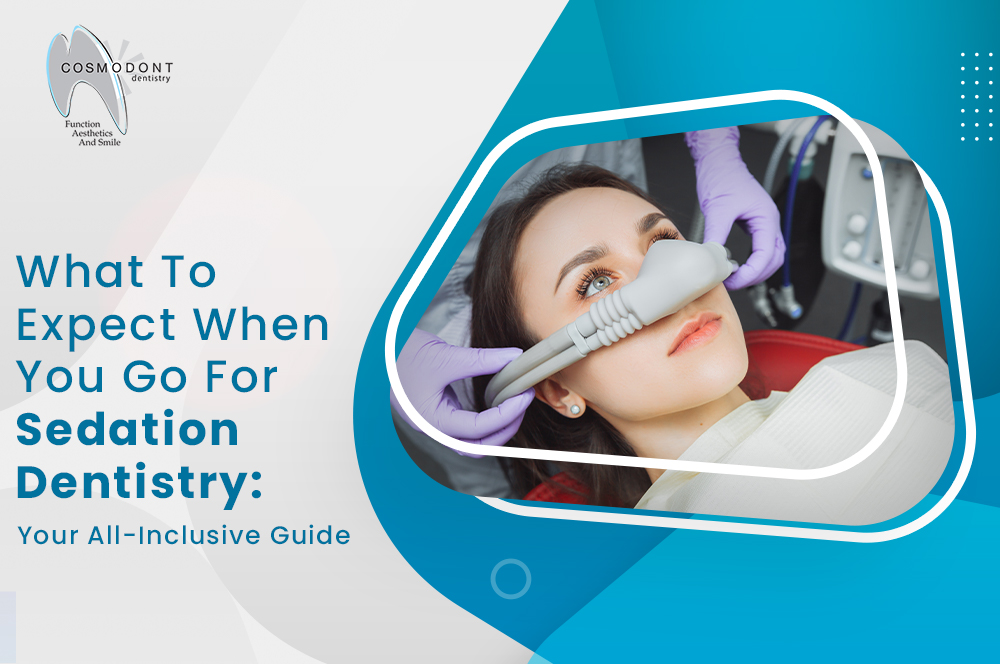What To Expect When You Go for Sedation Dentistry: Your All-Inclusive Guide

Do you feel anxious or scared when it’s time for a dental visit? If so, you aren’t alone. Many people experience anxiety when they think about sitting in the dentist’s chair, but there is an answer: Sedation Dentistry. Sedation dentistry can help put your mind at ease and make your appointment a much more pleasant one. This article provides an all-inclusive guide to what you should expect when you go for sedation dentistry, including the risks and benefits of this modern form of dental care.
Sedation dentistry is a field of dentistry that uses medication to help patients relax during dental procedures. There are different types of sedation available, from oral sedatives to intravenous (IV) sedation. The type of sedation your dentist recommends will depend on the procedure being performed and your individual level of anxiety.
Some people may feel anxious about going to the dentist, even for routine procedures. If this is the case, sedation dentistry may be a good option for you. Sedation can help you relax and even sleep through the procedure. This means you won’t be aware of what’s happening and won’t feel any pain.
It’s important to remember that sedation dentistry is not anesthesia. Anesthesia numbs the entire body and can put you to sleep. Sedation only relaxes you and may make you drowsy, but you will still be awake during the procedure.
- Why Would I Need Sedation Dentistry?
Sedation dentistry may be recommended for a variety of reasons. If you have dental anxiety or a fear of the dentist, sedation dentistry can help you feel more relaxed during your appointment. Sedation dentistry is also used for patients who have difficulty getting numb, have a strong gag reflex, or need to have extensive dental work done.
If you are considering sedation dentistry, it is important to discuss all of your options with Cosmodont Dentistry. We will be able to determine if sedation dentistry is right for you and explain the different types of sedation that are available.
- The Different Types of Sedation Dentistry
Sedation dentistry is a field of dental care that uses medication to help patients relax during dental procedures. There are different types of sedation dentistry, and the type that is right for you will depend on your level of anxiety and your desired level of sedation. Here are the different types of sedation dentistry:
Nitrous oxide: Nitrous oxide, also known as laughing gas, is a mild sedative that is inhaled through a mask during dental procedures. It helps to relax patients and make them feel less anxious. Patients remain awake and can communicate with the dentist during nitrous oxide sedation. The effects of nitrous oxide wear off quickly, so patients can drive themselves home after their procedure.
Oral conscious sedation: Oral conscious sedation involves taking a pill before your dental appointment. The pill will make you drowsy and relaxed, but you will still be able to respond to questions from the dentist. You may not remember much about your procedure after oral conscious sedation, but you will need someone to drive you home afterwards.
IV sedation: IV sedation is administered through a vein in the arm and works quickly to help patients relax during dental procedures. IV sedation can range from light to moderate, depending on how much medication is used. Patients who receive IV sedation will likely not remember much about their procedure afterwards.
- How Does Sedation Dentistry Work?
Sedation dentistry uses medication to help patients relax during dental procedures. There are different types of sedation, and the type your dentist uses will depend on the procedure being performed and your individual level of anxiety.
Some common types of sedation used in dentistry include nitrous oxide (laughing gas), oral sedation (a pill taken by mouth), and IV sedation (a medication administered through a vein). Nitrous oxide is the mildest form of sedation and is typically used for short, simple procedures. Oral sedation is more versatile and can be used for a variety of procedures, depending on the dosage. IV sedation provides the deepest level of relaxation but is only recommended for more complex procedures.
No matter what type of sedation you receive, you will remain conscious throughout the procedure and be able to respond to questions or instructions from your dentist. However, you may not remember much about the actual procedure afterwards due to the relaxing effects of the medication.
If you have been prescribed Sedapamin (oral) or another oral medicine for your dental appointment, please take it as directed by your doctor:
With food: If Sedapamin makes you nauseated, it is best taken with food. Try a light meal or snack about 1 hour before taking your medicine.
Swallow whole: Do not chew or crush Sedapamin tablets. Swallow them whole with water.
- What Happens After the Procedure?
After the procedure, you will be taken to a recovery area, where you will be monitored until the sedative wears off. Once it does, you will be able to go home and resume your normal activities. It is important to have someone drive you home after the procedure, as you will not be able to drive yourself.
- Contact Cosmodont Dentistry
We want to make it as easy as possible for you to get in touch with us here at Cosmodont Dentistry. You can reach us by phone, email, or even through our website. We are always available to answer any questions you may have about sedation dentistry.
If you would like to schedule a consultation, please give us a call at (416) 242-3285,(416) 242-4961. We will be happy to discuss your options with you and help you choose the best course of treatment.
